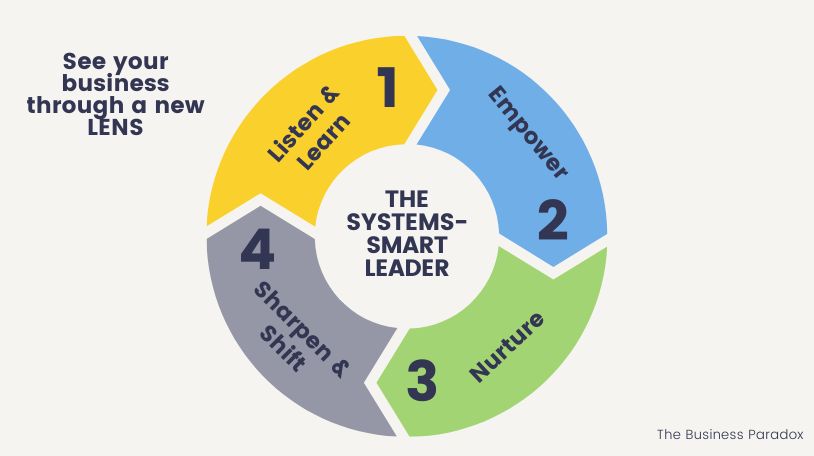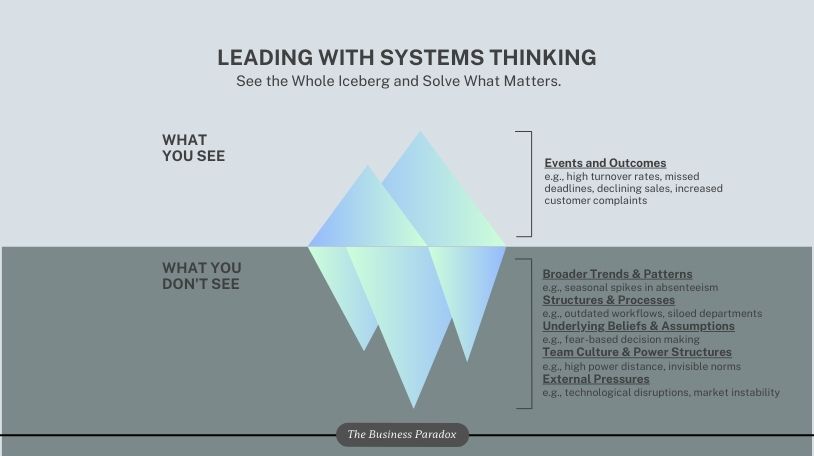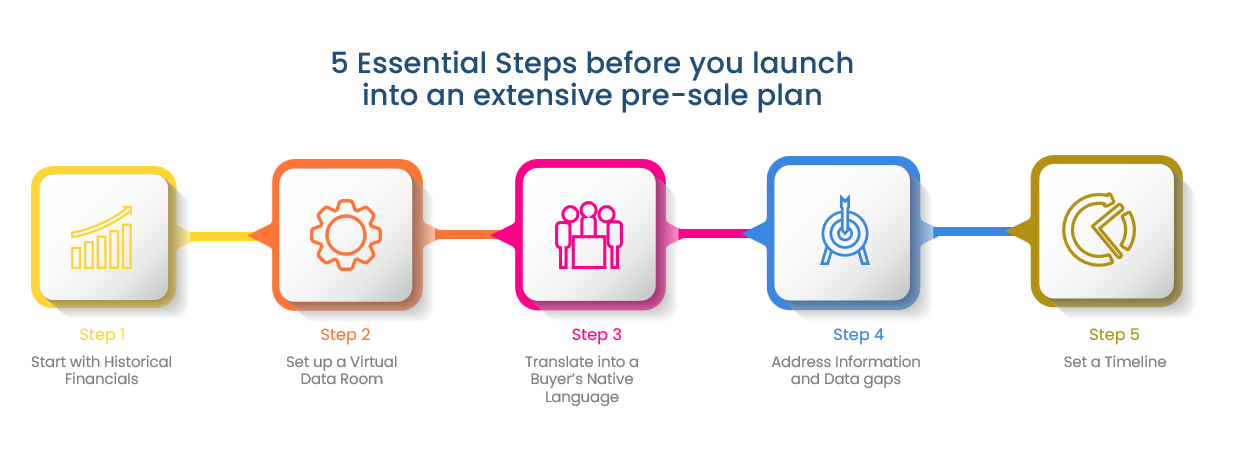You Can’t Control a Complex System, But You Can Influence It
We often think in linear terms: cause and effect, input and output. We’re taught to solve problems by tracing a single cause and applying a direct fix. Yet, complex systems—like ecosystems or business organisations—are a network of feedback, interdependence, and tipping points. In nature, change doesn’t happen in isolation. The smallest shift can echo across the entire system. Coral reefs demonstrate this clearly. They rely on intricate relationships, particularly between coral and microscopic algae called zooxanthellae. A seemingly minor increase in ocean temperature—just 1 to 2°C—can trigger a cascade of systemic breakdown in a coral reef. This slight change causes corals to expel the algae they depend on, leading to coral bleaching, loss of marine biodiversity, reduced coastal protection, declining tourism, and challenging economic conditions. This is systems thinking in action: a small change in one part of a complex system creates ripple effects across multiple domains.
Similarly, businesses are complex systems—interconnected, adaptive, and responsive. It’s no longer enough to be efficient, decisive, and in control. These traits once worked well in more stable and predictable environments. Just like coral reefs, businesses operate in intricate ecosystems. Supply chains span continents, teams collaborate across different time zones, and customer expectations can shift overnight. In such environments, trying to control every variable is impractical and it can backfire. Traditional management models, built on predictability and control, tend to miss these recurring dynamics and interdependencies. By adopting a systems thinking approach, leaders can anticipate patterns, identify leverage points, and steer their organisations with greater resilience.
Why Systems Thinking Matters More Than Ever
Rather than viewing specific events and problems in isolation, systems thinking examines how various components interact within the larger whole. This helps to uncover broader patterns, feedback loops, and hidden drivers of behaviour. For leaders, systems thinking is more than a problem-solving tool, it is a mindset for navigating uncertainty and driving long-term success. It offers a comprehensive view of how different parts of the organisation influence one another, helping leaders move beyond short-term fixes to address root causes. By shifting the focus from isolated performance metrics to the broader system, systems thinking uncovers how decisions in one area can ripple across the entire organisation.
This approach promotes adaptability and strategic agility, empowering leaders to pivot strategies in response to emerging challenges and opportunities. It also fosters a culture of continuous learning, collaboration, and shared ownership, enabling teams to work together toward shared success.
In complex systems:
- Small changes, big impact: Small actions can produce large or unexpected consequences
- Non-linear relationships: The cause and effect are not always obvious or direct
- Interconnected dynamics: People, processes, and technologies interact in unexpected ways
- Limited control, high leverage: You can’t control everything, but you can influence outcomes through key leverage points
What modern leaders need isn’t more control. They need a new lens.
This article introduces systems thinking through the metaphor of adopting a new LENS—urging leaders to view their businesses not as machines to control, but as systems to engage, influence and learn from. We provide a practical, four-part guide rooted in systems thinking, offering a new approach that replaces rigidity with reflection.

Through a New Lens: How Systems Thinking Transforms Problem-Solving
1. Listen and Learn
“If you want to change a system, you must understand it.”
Leaders need to slow down to see the bigger picture. By actively listening to feedback from various stakeholders and learning about the interdependencies and dynamics at play, we can develop more sustainable solutions. Listening creates the space for leaders to uncover blind spots and invites a deeper understanding of the system by surfacing diverse perspectives. Listening and learning means observing patterns rather than reacting to individual events. Leaders often focus on surface-level symptoms, such as declining sales or employee turnover, without addressing underlying systemic issues. Systems thinking invites a more thoughtful exploration of interdependencies, feedback loops, and root causes. It recognises that challenges rarely stem from a single factor—they emerge from a web of interconnected forces. Such operational issues often signal deeper systemic patterns, and they are not merely an isolated incident. By identifying how decisions, structures, and feedback loops interact, we can better visualise the interconnections and identify leverage points where small, well-designed changes can lead to outsized, systemic improvements.
2. Empower
“You don’t need more control—you need more contributors.”
In complex systems, no one person can see the full picture, not even the CEO. Insight often lives at the edges of the organisation: in frontline staff, cross-functional teams, or even customers. The leader’s role is to bring these diverse perspectives into the conversation because they acknowledge that the most effective solutions rarely emerge from top-down. Innovation takes place when different parts of the system are integrated into the process, allowing for a more holistic approach to challenges. By actively listening to their teams, leaders can unlock fresh ideas and empower individuals at every level to contribute to finding innovative solutions. Empowerment encourages collaboration and collective problem-solving, which are key in systems thinking. When team members are given autonomy to make decisions, they contribute to the system’s dynamic nature and they can identify leverage points for improvement. Leaders must cultivate systemic awareness throughout the entire business and empower individuals to understand the interdependencies within the system. This means building cross-functional collaboration, encouraging open dialogue, shifting from top-down direction to distributed intelligence and trust. By doing this, leaders tap into the full potential of the organisation—surfacing insights, accelerating learning, and enabling faster adaptation. Leaders should create an environment where employees have ownership over their work and are encouraged to propose solutions that consider the broader implications of their actions within the business.
3. Nurture
“Outcomes are shaped by the environment, not by top-down commands.”
Systems thinking emphasises the interconnectedness of all elements within an organisation and the ripple effects of individual actions. In complex systems, success does not come from top-down directives or rigid KPIs. It emerges from the interactions between people, processes, incentives, and culture. Leaders may not be able to control every moving part, but they can influence outcomes by fostering an environment that supports collaboration, innovation, and adaptability. The environmental conditions in which employees work in play an essential role in shaping behavior and outcomes. Just as ecosystems rely on certain conditions to thrive, organisations depend on a culture that supports open communication, trust, and a shared sense of purpose. The habits, norms, and values within the workplace shape the way actions are taken and decisions are made throughout the organisation. When leaders impose strict control, they risk stifling the creativity and problem-solving they aim to encourage. True leadership power lies in cultivating trust, continuous learning, and psychological safety—where individuals feel empowered to experiment, reflect, and adapt. Systems thinking underscores that organisational culture is not just a backdrop but an active force that shapes how individuals engage with each other and the work itself. Rather than dictating every move, leaders should design systems that guide behaviour through support, constructive feedback, and well-aligned incentives. In doing so, they enable strategy to evolve based on real-time insights, fostering an environment where success grows organically from the actions of engaged, motivated teams.
4. Sharpen and Shift
“Solving doesn’t mean settling on one answer, it means staying adaptive.”
Addressing surface-level symptoms instead of the entire system is a costly mistake as it leads to recurring problems and missed opportunities. Once a leader understands the system, involves the right people, and nurtures the environment, action still matters. Sharpening involves refining processes and strategies, while shifting means adjusting approaches based on new insights. In complex systems, no solution is ever final—what works today might not work tomorrow. That’s why leaders must develop the ability to both sharpen and shift. Unlike linear problems, complex challenges cannot be permanently “fixed”. They require continuous learning, iterative solutions, and flexibility. Effective leaders must balance immediate problem-solving with adaptability, responding to new data and feedback as they arise. This means being willing to adjust strategies, roles, or methods and fostering a culture of ongoing learning. Rather than aiming for static targets, leaders should focus on iterative progress—solving pressing issues while remaining open to change. This requires agility, regular feedback loops, and a commitment to critically evaluating both methods and outcomes.
Conclusion: Embracing Systems Thinking for Transformative Leadership
In our current business landscape, where change is constant and outcomes are shaped by countless interactions, leaders must evolve their approach to problem-solving and strategy. For modern leaders, success is less about making rigid plans and more about understanding the dynamic systems in which their organisations operate. Systems thinking encourages leaders to listen, learn, and empower their teams, fostering an environment where people feel confident to experiment and reflect. Leaders who adopt this approach understand that they cannot control every factor, but they can influence the conditions that allow their teams to thrive.
Businesses must recognise that success relies on transforming underlying patterns, structures, and beliefs that shape outcomes. Think of it like an iceberg—what we see at the top are just the events and results, while beneath the surface lie the deeper, sometimes invisible forces that influence them. Systems thinking teaches us that by shifting what’s below the surface—through empowered leadership, iterative learning, and flexibility—we can transform the visible outcomes above. Systems thinking is a tool for better decision-making and it is a mindset that allows leaders to continuously adapt, grow, and lead their organisation.

Stay ahead with exclusive insights! Sign up for our mailing list and never miss an article. Be the first to discover inspiring stories, valuable insights and expert tips – straight to your inbox!




